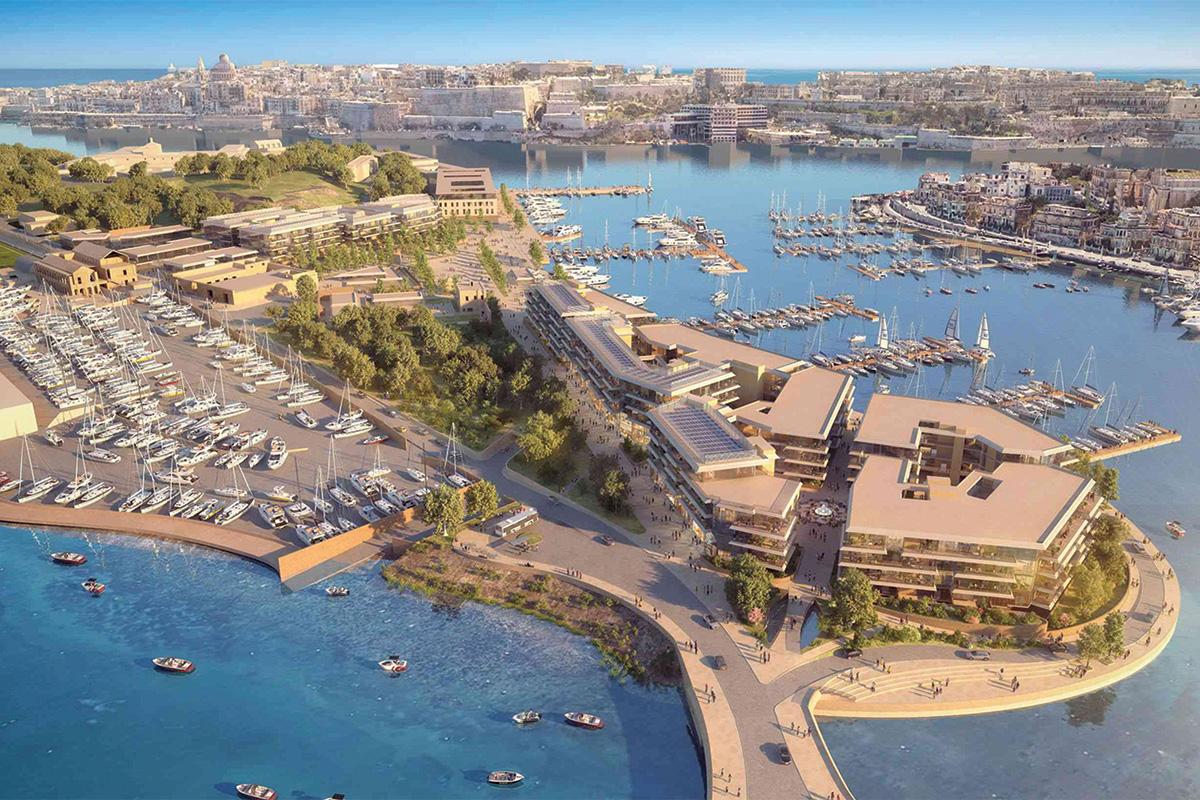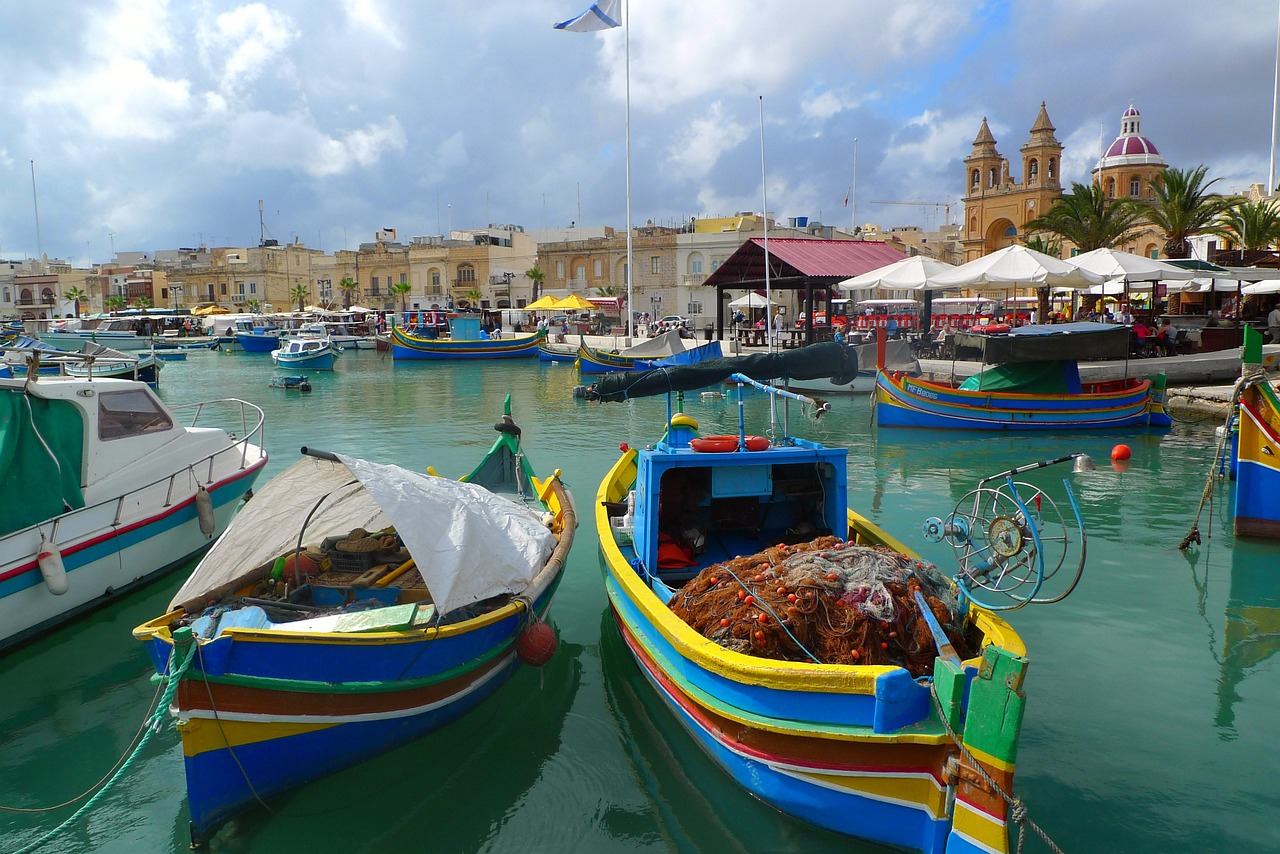The Island of Malta
Travel The World
Country name: Malta. Republic of Malta (Repubblika ta' Malta)
Capital: Valletta
Largest city: Birkirkara
Location: Malta consists of a group of islands in the Mediterranean Sea, 90 kilometers south of Sicily. The 3 largest islands
are Malta, Gozo and Comino.
Nationality: Maltese
Ethnic groups: Maltese, British.
Independence: 21 September 1964 (from the UK)
National holiday: Independence Day, 21 September; Republic Day, 13 December.
Religions: 98% Roman Catholic (A state religion).
Languages: Maltese, English
History: Phoenician colonists came here in about 2200B.C. Greek, Carthaginian and Roman occupations followed. The
apostle Paul was shipwrecked on Malta about 60A.D. After conquests by the Moslems in 870 and the Normans in 1090,
control passed in 1530 to the Nights of Rhodes. From then on called the Knights of Malta. The Ottoman Turks, who had
driven the Knights from Rhodes, besieged Malta furiously in 1565 but failed to take it. The island was captured by Napoleon
in 1798 and annexed by Great Britain in 1814.
In 1961 Malta gained full internal self government as the state of Malta. It became independent in 1964.
Note: Hover cursor over flash image to navigate sound, play, pause, next, previous and enlarge buttons.
A Tourist's Guide to Malta Attractions
Malta is a small archipelago in the Mediterranean Sea. Because of its strategic location, it has attracted many colonizers
in the past, including the Romans, the Arabs, the French led by Napoleon Bonaparte and the British. The result is a rich
history, as well as a diverse local culture. There are several interesting Malta attractions, too.
Golden Bay - Many tourists come to Malta to spend a day on the beach, particularly Golden Bay. Golden Bay is the
second largest sandy beach in Malta and is well known for its banana boat rides, fun atmosphere and spectacular sunsets
that make the beach a perfect background for evening barbecues.
Megalithic temples - The megalithic temples in Malta are the oldest free standing stone temples in the world, making them
the most popular Malta attractions. The Ggantija complex is the largest of the megalithic temples, consisting of two temples built
with corraline limestone blocks. The Mnajdra temple dedicated to the fertility goddess and overlooking the isle of Filfla
is worth visiting, too.
Hal Saflieni Hypogeum - Located in Paola, the Hypogeum is an outstanding example of subterranean architecture. It has
three levels and various chambers, some of which have been used as burial sites. You can also see the archeaological
treasures excavated from the Hypogeum at the National Museum of Archaeology.
Roman Villa - Located in the city of Rabat, the Roman Villa dates back to 100 BC and is thought to be the previous residence
of a wealthy Roman merchant or official. It is well known for its floor mosaics and is currently a museum with exhibits such
as oil lamps, marble busts and terracotta ornaments, some of which have been excavated directly from the villa's grounds.
Lascaris War Rooms - For a lesson in World War II history, take a guided tour through the Lascaris War Rooms, one of the
Malta attractions in the capital city of Valletta. These underground chambers were used as the command centre of the Allied forces
for the invasion of Sicily and is one of only four WWII military operations centres open to the public.
Blue Grotto - The caves in Malta are popular Malta attractions, too, particularly the Blue Grotto, a row of seven picturesque
caves near Wied iz-Zurrieq. The Blue Grotto is especially known for its remarkable rock formations which can be seen while riding
a small traditional boat. The Calypso's Cave offers scenic views, too.
There are other Malta attractions worth visiting, too, including museums, churches and towers built by the Knights of
St. John. All these make Malta a great destination for holidays in spite of its size so don't hesitate to spend your vacation
there.


Images: 1)Manoel island near Valletta. 2)Marsaxlokk
Malta's Culture
The island of Malta is a living proof of 6,000 years of civilization and development. The inheritance of the various denomina-
tions who ruled over the islands all through the ages can be seen and felt. Any tourist who comes to Malta will be amazed
by the cultural heritage that this relatively small island preserved for us all to see.
Malta's rich cultural background relates mainly from its history of foreign domination and the power and influence of the
Roman Catholic Church.
Folk traditions have evolved mainly around the village feast, commemorating the patron saint of each city and village in
Malta with air and land fireworks and processions. Good Friday also is celebrated with colorful processions in quite a a
small amount of villages. Imnarja, the Feast of St. Peter and St. Paul, which takes place on June 29, is the most important
folk celebration; it is decorated by folksinging (ghana) contests and fried-rabbit picnics at the picturesque area of Buskett.
Most tourists will definitely visit the annual Carnival festival. It is celebrated at the capital city of Valletta with energetic
dancing shows that include a sword dance commemorating the Maltese victory over the Turks in 1565, and other Maltese national dance.
The following list of national and public holidays shows that the Maltese have a lot to remember and they are proud of their glorious past.
National holidays:
31 March - Freedom Day A commemorative ceremony is held at the War Memorial at Floriana. During the afternoon,
traditional regatta boat races are held in Grand Harbour.
7 June - Sette Giugno Commemorative Ceremony at Palace Square, Valletta, in remembrance of the incidents of the
7th June 1919.
8 September - Victory Day Commemorative ceremony in Valletta, to celebrate the lifting of the 1565 siege against the
Turks, the capitulation of the French in 1800, and the siege of the Axis powers in 1943. the traditional colourful and keenly
contested boat race or regatta, is held at the Grand Harbour in the afternoon. Festivities are also held at Senglea, Naxxar
and Mellieha in Malta and at Xaghra in Gozo.
21 September - Independence Day Malta attained its Independence in 1964. A full programme of activities takes place in
various localities.
13 December - Republic Day Malta became a Republic in 1974 by resolution of the House of Representatives. Celebrations,
including horse races at Marsa, are held to commemorate the event.
Public holidays:
1 January - New Year's Day
10 February - Feast of St Paul's Shipwreck- This feast commemorates the shipwreck of St.Paul in Malta in 60 A.D. an
event registered in the Acts of the Apostles.
19 March - Feast of St Joseph St. Joseph Feast celebrated at Rabat.
10 April - Good Friday This is a day of general mourning: cinemas, places of entertainment and offices are kept closed.
Good Friday pageants are held at about 17.00hrs in 14 different towns and villages. During these pageants, a number of lifesize
statues depicting scenes from the passion and death of Jesus Christ are carried shoulder high in procession along the
main streets of the particular locality. Men and women personifying Biblical characters from the Old and New Testament, dressed
in period costumes, take part in the processions.
1 May - Worker's Day The feast of St. Joseph the Worker is also celebrated.
29 June - Feast of St Peter and St Paul Known in Maltese as 'Mnarja'. This is a traditional folkloristic event. The festivities
open on the eve of Mnarja with open-air folk-singing and a musical programme at Buskett Gardens which continues up till
the early hours of the 29th day of June. Maltese dishes are served for the occasion with fried rabbit being a traditional
specialty of the evening. On the 29th, activities at Buskett continue with band marches and an agrarian exhibition. During
the afternoon, traditional horse races are held at Saqqajja Hill, Rabat. The word Mnarja is derived from Luminarja (illumination),
when Mdina, Malta?s medieval capital, was illuminated by bonfires for the occasion.
15 August - Feast of the Assumption Festivities are celebrated at Mqabba, Qrendi, Gudja, Ghaxaq, Attard, Mosta and
Victoria in Gozo.
8 December - Feast of the Immaculate Conception
25 December - Christmas Day December in Malta is primarily the season for family parties. Young boys and members of
a lay Catholic organisation participate in the evening processions of December 24, with the statue of Baby Jesus held in all
towns and villages. The highlight is the Christmas Eve Midnight Mass, during which a child relates the story of the nativity.
Banks and shops do not open on public and national holidays.
Some shops, especially in tourist areas, will open as usual.